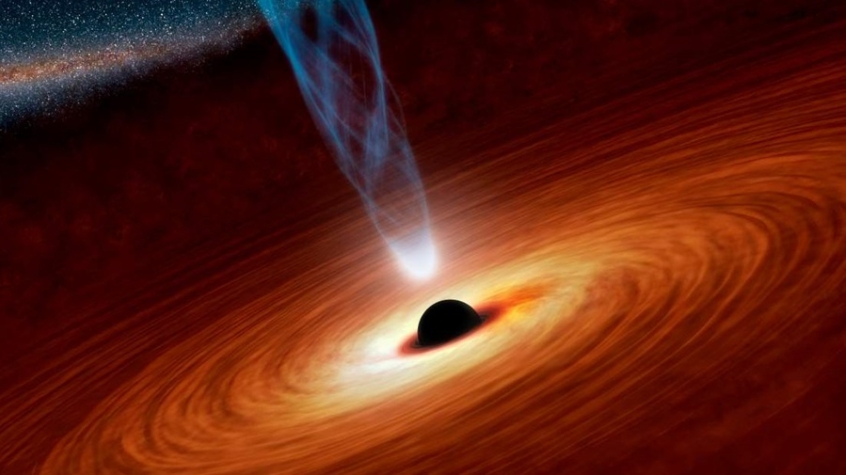
Like a massive whirlpool sucking everything around it, a black hole in space is one of the mysteries in the Universe that no mortal mind could ever fully comprehend. The only thing that scientists know is that it is a region in space with gravity so intense that no matter, not even light, could escape from as it swallows everything without a trace.
There are many black holes in the Universe, at least one for each galaxy. Recently, a startling discovery was made by space scientists from the Keele University and the University of Central Lancashire in England. For the first time, they spotted a super massive black hole so large that it can fit 7 billion suns.
The gigantic black hole, known as CID-947, was found in the galaxy SAGE0536AGN, which scientists estimate to be nine billion years old, according to a CNN report.
Megan Urry of Yale University said the super massive black hole's existence was only discovered accidentally.
"Our survey was designed to observe the average objects, not the exotic ones. This project specifically targeted moderate black holes that inhabit typical galaxies today. It was quite a shock to see such a ginormous black hole," Urry said in a statement posted on Yale University's website.
The newfound black hole, spotted through the National Aeronautics and Space Administration, is so massive that it is larger than its host galaxy's size. It is also far bigger than current theories allow.
Study lead author Benny Trakhtenbrot, an astrophysicist at the Swiss Federal Institute of Technology in Zurich, shared with Space.com that the result was so shocking for his team that they had to verify it with independent outside experts.
"The black hole has roughly one-tenth of the mass of the host. The black hole is massive compared with the normal host galaxy," Trakhtenbrot explained.
"The measurements correspond to the mass of a typical galaxy. We therefore have a gigantic black hole within a normal-size galaxy," he added.
The researchers also said that their findings may call into question current models of galaxy formation. They believe the super massive black hole grew much faster than the galaxy surrounding it.
Whatever it is, the finding only deepened the mystery of the Universe and underscored Man's limited intellectual capacity to understand God's creation even with the latest high-tech tools at his disposal.













